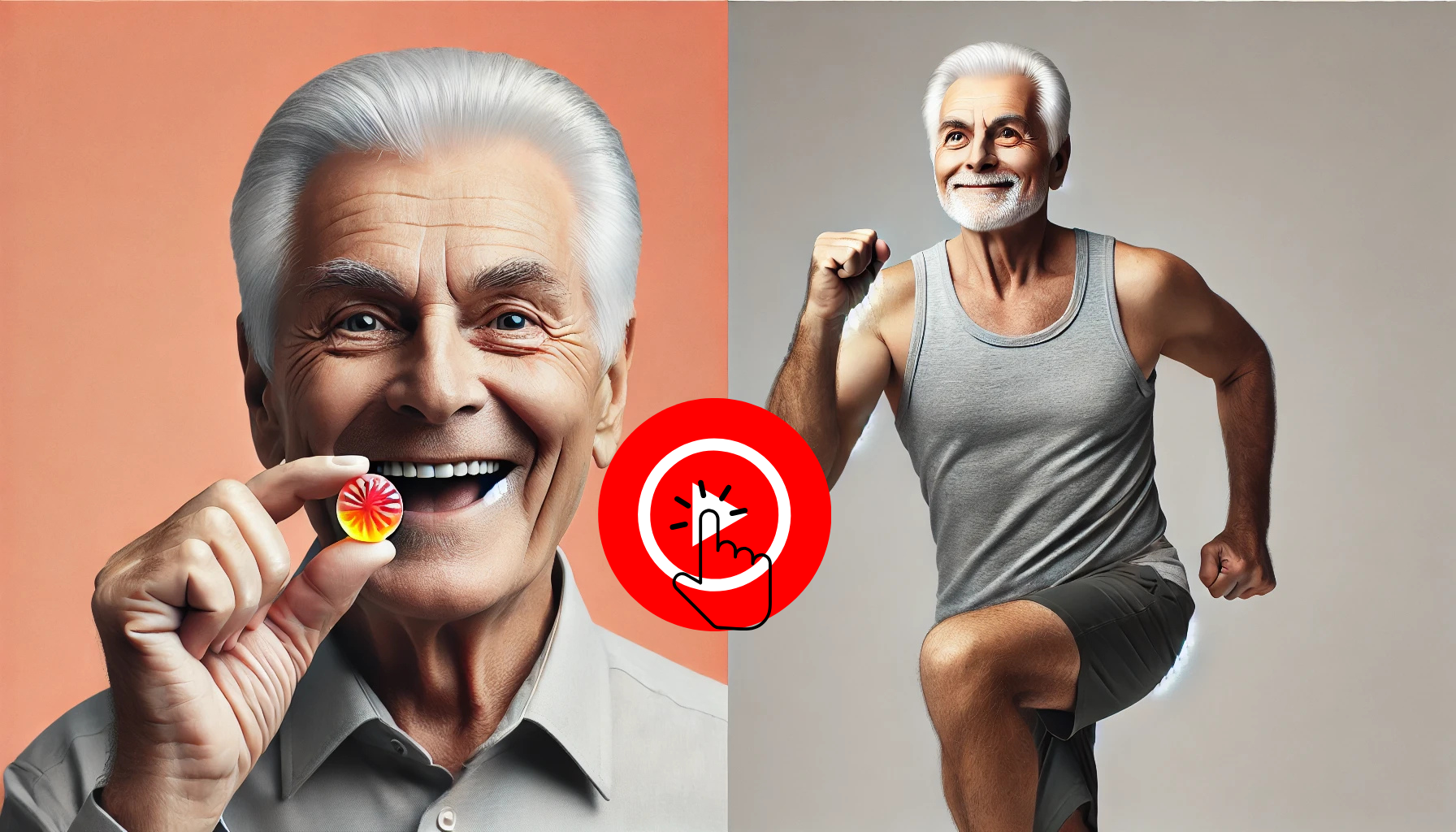understanding bone-on-bone knee pain and its natural remedies
Explore the challenges of bone-on-bone knee pain and discover effective natural remedies to regain mobility and joy in life.
Top Doctor Recommend This New Bоswеllіа & Cапаbіԁіоl Sweet to Avoid Knee Surgery
If you’re tired of living with the discomfort of chronic joint pain and yearn to move freely without fear, you are not alone. Many seniors dream of reclaiming their active lifestyles and enjoying everyday moments without struggle. Imagine being able to walk, play with grandkids, or simply enjoy a beautiful day without the nagging pain that holds you back. This is your chance for a brighter tomorrow. Click the button below to watch a powerful video that showcases a natural, safe solution that has already transformed the lives of thousands just like you. Don’t wait—this could be the first step toward the relief and joy you’ve been seeking.
Bone-on-bone knee pain is a distressing condition many face as they age. It results from the deterioration of cartilage, leaving bones to rub against each other, causing pain and discomfort. For those aged 55 and older, the emotional and physical impacts can be profound, limiting activities and joy in daily life. In this article, we will explore the causes of this painful condition, its effects on your lifestyle, and present natural remedies that can provide relief and restore a sense of freedom.
what is bone-on-bone knee pain?

Bone-on-bone knee pain is a serious condition where the cartilage in the knee has worn away. This loss of cartilage means that the ends of the bones are now rubbing against each other. This can happen because of arthritis, injury, or just the natural aging process.
When the bones touch, it can cause inflammation and severe discomfort. Many people feel a lot of pain when they try to move or put weight on the knee. This condition can make daily tasks, like climbing stairs or walking, very hard.
Common signs of bone-on-bone knee pain include stiffness in the knee, swelling, and a feeling of grinding when moving the joint. These symptoms can make it hard to enjoy life.
If you feel any of these signs, it is important to visit a doctor. They can help you figure out the best plan to manage your pain and improve your mobility.
common causes and symptoms
Bone-on-bone knee pain can be caused by various factors. The most common cause is osteoarthritis, a condition where the cartilage breaks down over time. This leads to the bones in the knee rubbing directly against each other.
Another cause is injury. Injuries from sports or accidents can damage the knee structure, leading to cartilage loss and increased pain. Sometimes, repeated stress from certain physical activities can worsen the condition.
Symptoms of bone-on-bone knee pain include:
- Pain: This is typically sharp and might occur during movement or after sitting for long periods.
- Stiffness: Feelings of tightness in the knee after long periods of inactivity.
- Swelling: Inflammation around the knee joint is common and can cause discomfort.
- Grinding sensation: A grating feeling may happen when the knee moves.
If you notice any of these symptoms, it’s good to see a healthcare professional for further assessment.
the emotional toll of joint pain
Experiencing joint pain can take a big emotional toll on individuals. Pain in the knees or other joints often leads to feelings of frustration and sadness. Many people suffer from a loss of independence due to their physical limitations.
When activities like walking or sitting become painful, it can lead to a decrease in social interactions. People may avoid gatherings or events because they fear being unable to participate fully.
Living with constant pain can also cause issues like anxiety and depression. Patients might worry about their future and whether they will ever feel better. These emotions can create a cycle of stress that makes the pain feel worse.
Additionally, the struggle to manage daily tasks can lead to feelings of isolation. Individuals might feel that others do not understand their pain, which can create a sense of loneliness.
Recognizing and addressing the emotional side of joint pain is important. Talking to friends, family, or professionals can help provide support during tough times.
natural remedies for relief

Many people seek natural remedies to relieve bone-on-bone knee pain. These remedies can help reduce discomfort and improve mobility without relying solely on medications.
One popular option is boswellia extract. This natural herb comes from the resin of the boswellia tree. Studies show that it may help reduce swelling and pain in the joints.
Turmeric is another effective remedy. Its active compound, curcumin, has anti-inflammatory properties that can soothe joint pain.
Many people also use ginger, known for its ability to help with inflammation. Adding fresh ginger to meals or taking ginger supplements may provide relief.
Hemp extract, including CBD oil, has gained popularity as a way to manage pain. It may help reduce discomfort and improve overall well-being.
It’s essential to maintain a healthy weight, as extra pounds can put more strain on the knees. Regular low-impact exercises, like swimming or walking, can be beneficial as well.
Always consult a healthcare professional before starting any new treatments or supplements to ensure they are safe for you.
how boswellia and hemp extract work

Boswellia is an herbal extract derived from the resin of the boswellia tree. It has been used for centuries in traditional medicine. This powerful extract may help reduce inflammation in the body, which is often the cause of joint pain. Studies show that boswellia can inhibit certain enzymes that lead to inflammation, helping to alleviate pain.
One of the key benefits of boswellia is that it supports joint health. Many people who take boswellia report improved mobility and less discomfort in their knees and other joints.
Hemp extract, especially CBD oil, has gained attention for its potential to manage pain. It interacts with the body’s endocannabinoid system, which plays a role in regulating pain and inflammation. Some research suggests that hemp extract may help to reduce chronic pain without the psychoactive effects associated with marijuana.
Taking boswellia and hemp extract together may offer enhanced relief. Each works through different mechanisms to help reduce pain and swelling. Many people find that using both can improve their overall comfort.
Always consult with a healthcare provider before starting any new supplement to ensure safety and proper dosage.
real-life testimonials

Many individuals have found relief from bone-on-bone knee pain through various treatments and lifestyle changes. Here are some real-life testimonials from people who have experienced significant improvements:
John, 62: “After years of suffering from knee pain, I started taking boswellia extract. Within a few weeks, I noticed a huge difference. The swelling went down, and I could finally enjoy my morning walks again!”
Maria, 54: “I was hesitant to try CBD oil, but my friend encouraged me. It really helped with my knee pain. I felt more comfortable moving around, and my mood improved because of it!”
David, 70: “Physical therapy seemed daunting at first. But, with the guidance of my therapist, I learned exercises that strengthened my knees. Now, I can play with my grandkids without fear of pain. It’s been life-changing!”
Linda, 56: “A combination of turmeric in my diet and losing some weight helped me a lot. I went from struggling to get up from a chair to being able to ride my bike again!”
These stories reflect the hope and success many find when seeking solutions for knee pain. Each journey is unique, and different treatments may work for different people.
steps to avoid knee surgery
For many people suffering from bone-on-bone knee pain, surgery may seem like the only option. However, there are several steps you can take to avoid knee surgery and manage your pain effectively.
1. Consult a specialist: Start by seeing a medical professional to discuss your symptoms. They can recommend a proper treatment plan tailored to your needs.
2. Physical therapy: Engaging in physical therapy can help strengthen the muscles around your knee. A therapist can design an exercise program focused on stability and flexibility.
3. Weight management: Reducing weight can lessen the strain on your knees. A balanced diet and regular exercise can help you achieve a healthier weight.
4. Use supportive devices: Knee braces or orthotic shoe inserts can provide additional support to your joints, aiding in pain relief during daily activities.
5. Explore injections: Corticosteroid or hyaluronic acid injections can help reduce inflammation and provide temporary relief from pain.
6. Consider supplements: Natural supplements like glucosamine and chondroitin may support joint health and reduce pain.
7. Stay active: Engage in low-impact exercises such as walking, swimming, or cycling. Regular activity can keep your joints flexible and strengthen your muscles.
By following these steps, you can often manage your knee pain effectively and avoid the need for surgery.
If you’re tired of living with the discomfort of chronic joint pain and yearn to move freely without fear, you are not alone. Many seniors dream of reclaiming their active lifestyles and enjoying everyday moments without struggle. Imagine being able to walk, play with grandkids, or simply enjoy a beautiful day without the nagging pain that holds you back. This is your chance for a brighter tomorrow. Click the button below to watch a powerful video that showcases a natural, safe solution that has already transformed the lives of thousands just like you. Don’t wait—this could be the first step toward the relief and joy you’ve been seeking.






Seja o primeiro a comentar!